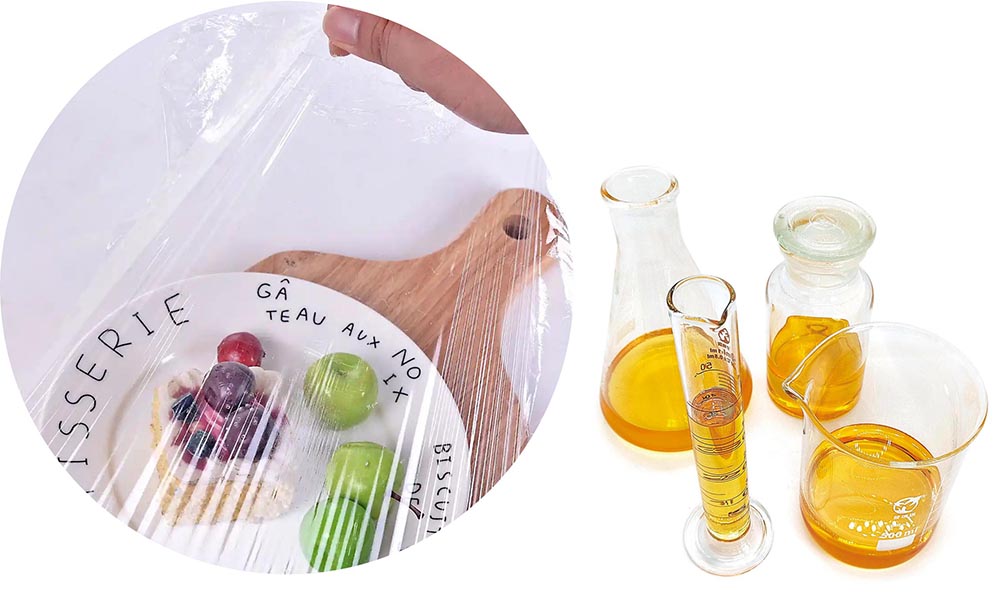In the dynamic realm of food packaging, where safety, shelf-life extension, and product integrity converge, liquid stabilizers have emerged as unsung heroes. These additives, meticulously engineered for food-grade films, play multifaceted roles that are pivotal to both consumer health and industrial efficiency. Let’s delve into the four core functions that render liquid stabilizers indispensable in modern food packaging.
Thermal Resilience: Shielding Films from Heat-induced Degradation
Food-grade films, whether polyethylene (PE) or polypropylene (PP), undergo high-temperature processing (e.g., extrusion, blow molding) reaching up to 230°C. Liquid stabilizers act as thermal guardians, intercepting free radicals generated during heat exposure. A study by the Institute of Packaging Technologies found that without stabilizers, film samples showed a 35% reduction in tensile strength after 10 minutes at 200°C. By contrast, films with optimized liquid stabilizer formulations maintained over 90% of their original strength, ensuring structural integrity during cooking applications like microwaveable meal trays.
Prolonging Shelf Life: Mitigating Oxidation and UV Degradation
Beyond processing, liquid stabilizers combat environmental stressors during storage and transportation. UV radiation and oxygen exposure can trigger photo-oxidation, causing films to yellow and embrittle. For instance, in a comparative test on potato chip packaging, films with UV-stabilizing liquid additives extended product freshness by 25%, as measured by peroxide value. Fatty acid-based antioxidants in liquid stabilizers scavenge oxygen, while UV absorbers like benzotriazoles shield films from radiation damage, preserving both the packaging’s aesthetic appeal and the food’s nutritional value.
Processability Enhancement: Optimizing Melt Flow and Homogeneity
Manufacturers face challenges achieving uniform film thickness and surface finish. Liquid stabilizers reduce melt viscosity by up to 18%, according to industry reports, enabling smoother extrusion. This improvement is particularly crucial for high-speed production lines, where a 0.1 mm variance in thickness can lead to significant waste. By promoting consistent plasticization, stabilizers minimize defects like sharkskin surface and thickness fluctuations, resulting in cost savings and improved productivity.
Regulatory Compliance: Ensuring Food Safety and Consumer Trust
The safety of food-grade films hinges on additive migration control. Liquid stabilizers must adhere to stringent regulations, such as the US FDA 21 CFR 178.2010 and EU Regulation (EC) No 10/2011. For example, calcium-zinc composite stabilizers, certified as non-toxic alternatives to traditional lead-based compounds, comply with global food contact material standards. Their low migration rates (≤0.1 ppm for heavy metals) make them ideal for infant food packaging, where safety margins are paramount.
The Future Landscape: Innovations in Stabilizer Technology
The industry is witnessing a shift towards bio-based liquid stabilizers. Epoxidized soybean oil, derived from renewable resources, now accounts for 30% of the eco-friendly stabilizer market share. Researchers are also exploring multifunctional formulations combining stabilization with active properties, like antimicrobial capabilities. These advancements promise to redefine food packaging’s safety and sustainability benchmarks.
In conclusion, liquid stabilizers are not mere additives but integral components that safeguard food integrity, streamline production, and uphold regulatory compliance. As consumer demand for safer, longer-lasting packaging grows, these versatile compounds will continue to evolve, driving innovation in the food packaging ecosystem.
Post time: Jul-31-2025


